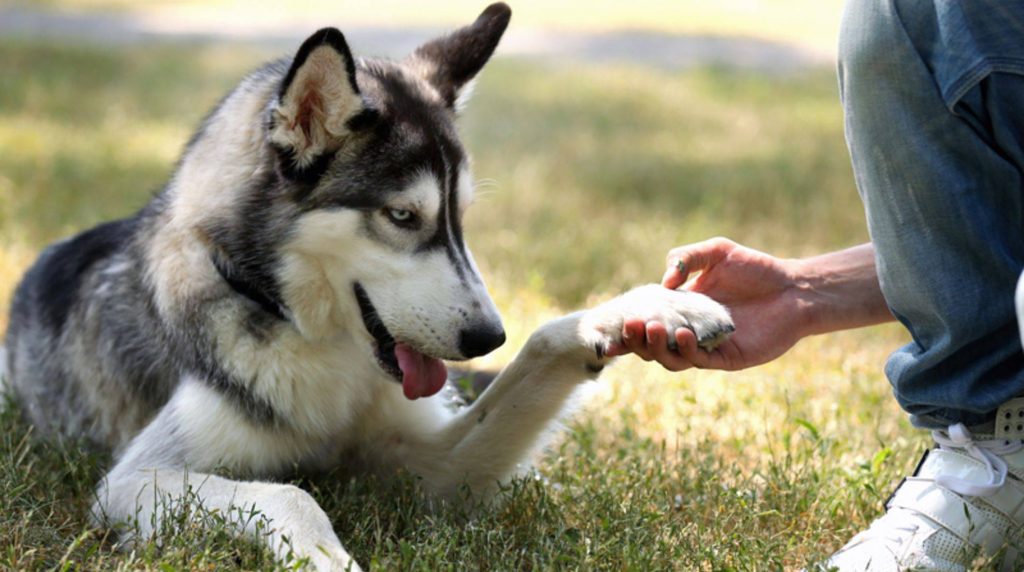If your dog doesn’t obey your commands, it’s not defiance or malicious intent. Most often, the problem is that the four-legged friends do not understand what we want from them if they do not obey immediately. The following tips will help you communicate better with your dog.

Dogs are very clever animals, but the human language remains a foreign language for them. They can understand specific commands, but they need a little time and enough repetition in training to learn them.
- Dogs only understand clear commands
People are used to communicating and understanding with words. From an early age, they learn to pay attention to spoken language and its meaning to understand what others expect of them. Body language, tone of voice, and circumstances unconsciously play a role. With dogs, it is the opposite. They do not understand the content of human words but rather pay attention to body language, intonation, tone, and the prevailing circumstances to deduce what the bipeds want from them. If you change or add to your commands in between, your dog will no longer understand you.
So make sure that “sit” is always “sit,” “no” is always “no,” and “foot” is always “foot.” If you vary the command and say “Sit down!”, “Don’t do that!” or “Here!” sound your four-legged friend cannot know are synonyms for his usual commands. Also, if you say, “I said sit, Bello, didn’t you hear?” your dog doesn’t get what you’re saying. Also, agree with your family or roommates on a specific, clear command for a particular, precise action. Being consistent will help your dog understand you better. Also, supplement the verbal commands with body language signals and make sure that the tone of your words always sounds the same. After all, what matters to your pet is the sound and style, not the meaning of the content.
- Avoid distractions during training
Dogs have very keen senses and pick up on things that humans tend to miss. If your dog ignores commands when you are clear and consistent, it may be because something is distracting him. This can always happen, especially if your four-legged friend is in a stimulus-intensive or restless situation that offers a lot of distraction, for example, in the dog park, on a busy street, or when there are visitors. However, it is essential that your pet can concentrate on learning the commands in the beginning.
Therefore, choose a relaxed moment and a quiet place for training, especially at the beginning when you want to practice a new command. You can increase the stimuli later if your four-legged friend listens to you in the quiet atmosphere. If that still doesn’t work, take a step back until your dog knows what you want him to do when giving a specific signal.
- Only practice when your dog is comfortable
Distraction can come from the outside and the inside, for example, if your four-legged friend is very excited or stressed. Hunger or tiredness can also affect your dog’s ability to concentrate. Animals are not all that different from us humans – we also cannot focus well and are less receptive when we are hungry, tired, hectic or nervous, under pressure, overwhelmed, or underwhelmed. Consequently, the ability to learn in such a mood is not the best. Dogs are then less able to understand and retain new subject matter – such as unfamiliar commands.
So make sure your furry friend is relaxed and content when you exercise with them. He should be full but not sleepy, eager to learn but not overexcited. For example, after a walk and some time, but not too long after the last meal. Give your four-legged friend a little time to get home and process the exciting impressions of going for a walk; then, you can start training.
- Observe the right timing
For your dog to understand what you want from him, the timing must be right. This means that you immediately follow the desired behavior with the reward. You can immediately punish undesired behavior by avoiding a tip. For example, stop immediately if your dog pulls on the leash while walking. If he relaxes, move on. So your four-legged friend understands that he can only keep walking and sniff out the exciting news from his fellows along the way if he stays calm and is granted this pleasure as soon as he pushes.
Similarly, you can teach your dog commands to stop a specific behavior, such as barking constantly. For example, if he barks for no reason, say “Off!” and wait for him to be quiet. Then he gets a reward: a great treat, praise, his favorite toy, or a cuddle.
- Be patient and give the dog time
All this takes time and many repetitions until your dog has established and internalized the connection between the signal – a command, sign, and a sound – and the desired behavior. So go to work with a lot of patience and check possible disruptive factors if a lesson is unsuccessful. Maybe your four-legged friend was distracted, didn’t feel very well, or didn’t express yourself clearly.








